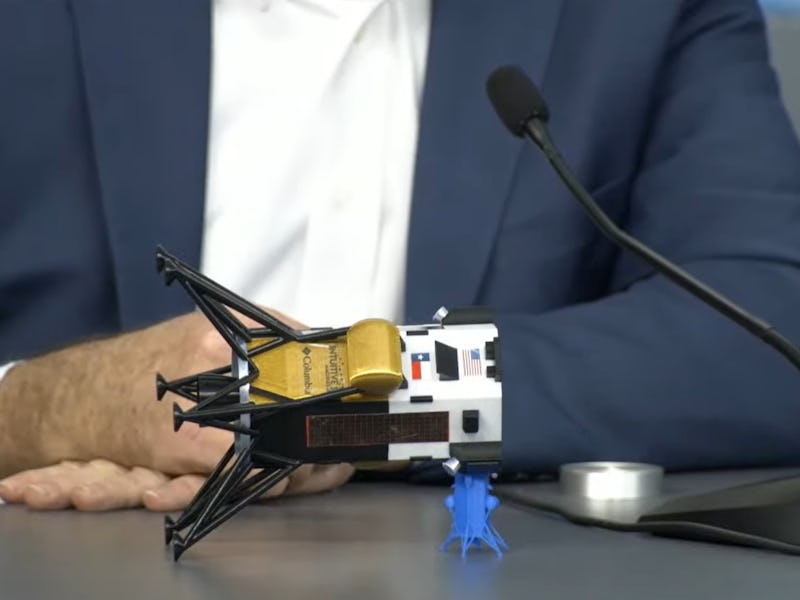Houston, We’ve Landed Sideways (Again)
Another lunar landing, another toppling payload.

In the span of just 34 days, two different spacecraft have joined a rare club: landing on the Moon sideways.
It’s not what either the Japan Aerospace Exploration Agency (JAXA) or Houston-based Intuitive Machines were aiming to do. But considering how perilous landing on Earth’s natural satellite can be, how many have failed to reach it in just the last year, and all the other entities making a mad dash for the Moon, landing sideways is what they’ll take. Both organizations have called their mission a success.
Japan’s Smart Lander for Investigating Moon (SLIM) spacecraft landed on its face near Shioli crater, on the southeastern side of the lunar nearside, on January 19. Mission controllers worried that its unexpectedly-west-facing solar panels wouldn’t receive enough sunlight to recharge. Thankfully, they were able to recuperate from a battery life as low as 12 percent once the Sun’s position in the lunar sky changed.
Then, on Thursday, a sideways lunar landing happened again. Intuitive Machines’ IM-1 mission reached Malapert A, a place just a few hundred kilometers away from the lunar south pole. But one of the Odysseus lander’s six legs seems to have snagged on a Moon rock, fracturing in the process, and causing the 13-foot-tall Odysseus to tip over on its side, where another rock or a slope is acting like a pillow.
“It was quite a spicy seven-day mission,” Steve Altemus, co-founder and chief executive officer of Intuitive Machines, said on Friday during a press conference. And according to Tim Crain, Intuitive Machines co-founder and chief technology officer, Odysseus would have gotten away with it if it wasn’t for those meddling Moon rocks.
Crain said on Friday that a roundup of data from Odysseus’s inertial measurement unit, its camera velocity measurement and NASA’s onboard navigation doppler lidar shows that for 90 seconds out of the 120 second timeline before landing, the lander was upright.
“We were very close to the vertical phase… we were in stable control and vertical when we landed,” Crain said. But, it didn’t stick the landing.
That might not be a problem, Altemus said. “Fortunately, most of the payloads are exposed to the outside, above the surface.” The panel facing the ground bears a payload that was never meant to be mobile, he added — though it will be a blow for art-lovers. The now ground-facing panel holds a series of silvery sculptures of moon phases created by the great American pop artist Jeff Koons.
Intuitive Machines will still try to take a picture of that downward-facing payload. According to an update published on Monday, flight controllers will also collect data and continue communicating with Odysseus until the lander’s solar panels are no longer exposed to light, until around Tuesday morning.
Though neither SLIM nor Odysseus landed upright, at least they’re still in one piece. Several landers, like Russia’s Luna-25 and Hakuto M1 from the Japanese company iSpace, all recently crash landed on the Moon. Pittsburgh-based company Astrobotic launched towards the Moon early this year to land there, but its Peregrine lander suffered a propulsion anomaly that required it to be sent into Earth’s atmosphere for self-destruction.